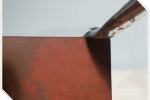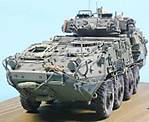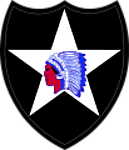How to make a metal plate
12
Comments
Step Four:
In this step we will be adding some high lights to the edges of the cardboard/steel plates to accentuate the look of steel. In other words we will simply be dry-brushing around the edges. Citadel's Leadbelcher this is a steel metallic color, but again, you can use any brand you prefer. I just like Citadel colors for brush painting. Just remember to use one that is not too shiny. More of a 'p encil dull look’ is what you want. Or simply put; you can just as well use a pencil with similar results. Although, I do prefer the paint method.1. Take your Wide/medium flat brush and dip it into the pot. When you remove it make sure you have a kitchen towel ready, as you will be removing much of the excess paint off until there is almost nothing left to remove.
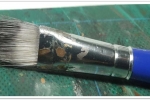
Wide Brush (click to expand)
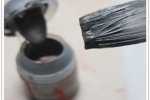
The brush with the paint loaded (click to expand)
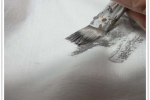
Brush off the excess paint off the brush unto the towel, until there is almost nothing left on the tip (click to expand)
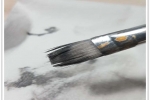
The tip of the brush almost wiped clean off before application (click to expand)
The photos below show how it looks after applying the metallic color to the edges:
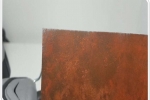
Notice the very subtle effect you achieve (click to expand)

Another close-up view. See how it makes a difference, although small (click to expand)

In this photo you can see the difference with and without the metallic edges. The edge on the left does not have any metallic paint. The edge at the top has a metallic paint applied. (click to expand)
Comments
Is there any advantage to using cardboard, or is it just because it is cheaper?
JUL 24, 2019 - 11:11 AM
I can think of a some:
1. Cheap to come by. AKA, easily available.
2. light weight
3. Easy to work with, in terms of application.
4. Does not need a lot of tooling
JUL 24, 2019 - 08:53 PM
The markings you see could be hand written in usually white or yellow paint stick, and may be the plate identity or tracking number, a heat number, order number, grade of steel, and maybe the gauge/thickness and also length x width.
Some places may line mark that information down the length of the plate, with what is essentially an inkjet printer (or some places use a set of stencils on a wheel - that’s old school)
Or there might also be a printed tag/sticker attached to an end with ID/Heat/grade and probably some bar code.
Not all plates would be scaled up and rusty. Stainless steel or other specialty metal plates like nickel or titanium alloys would be pickled clean, and would be somewhat shiny, or even ground and would be very shiny and clean.
If it’s regular carbon steel and fresh off the rolling mill, I think the metal with have a more blue/gray coloration from the mill scale/oxide. If they sit out for a long time the oxide/rust will grow and it becomes the red/brown.
And plated unless they are belt ground are rarely totally smooth. There will be some pits (would be small in most models), there could be some firecrack pattern from the rolls that may repeat - many other things get transferred from the rolls or vacuum lifters etc.
AUG 14, 2019 - 01:52 PM
Copyright ©2021 by Charles King. Images and/or videos also by copyright holder unless otherwise noted. The views and opinions expressed herein are solely the views and opinions of the authors and/or contributors to this Web site and do not necessarily represent the views and/or opinions of Armorama, KitMaker Network, or Silver Star Enterrpises. All rights reserved. Originally published on: 2019-07-24 16:57:22. Unique Reads: 16478




